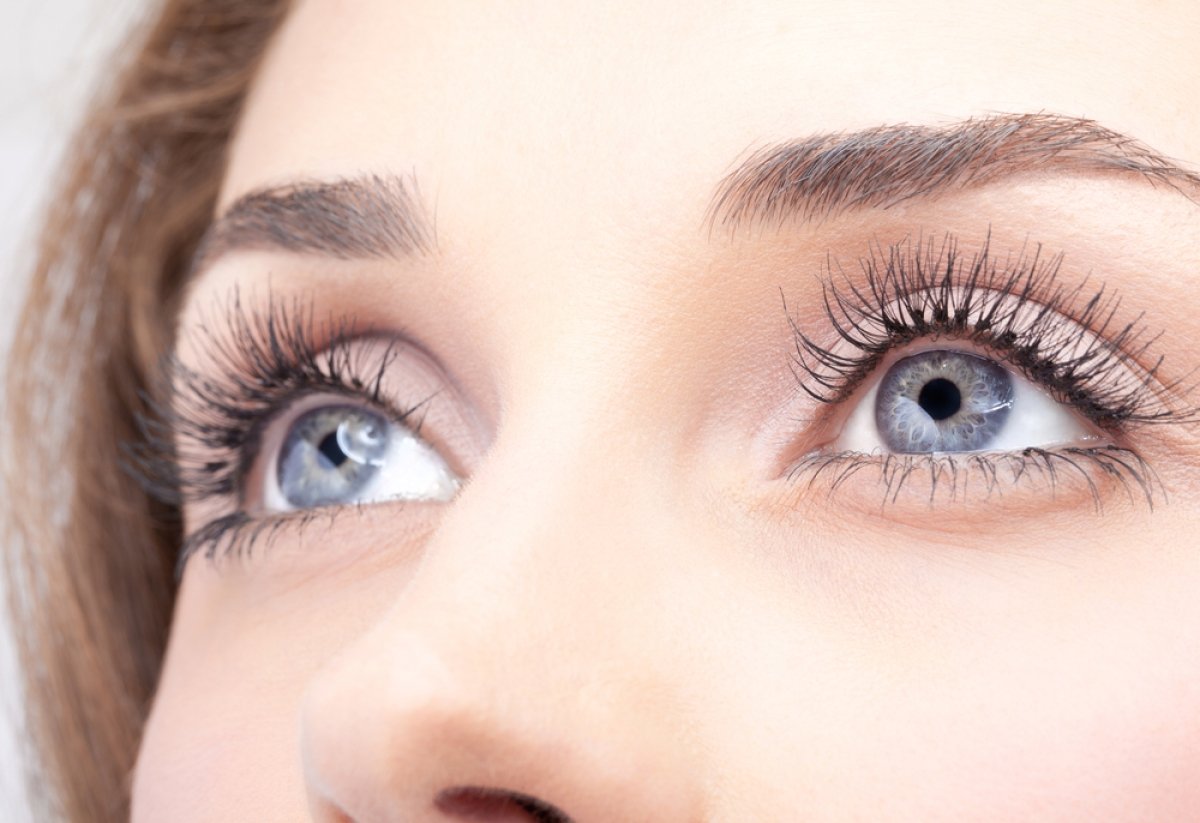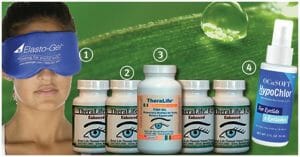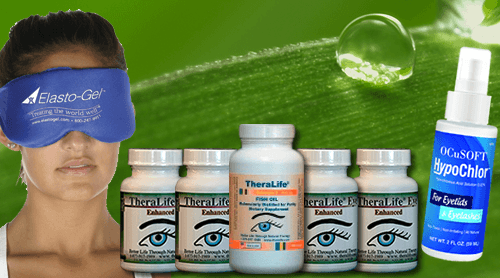To prevent recurring chalazia, consider the benefits of TheraLife’s products, which focus on managing sebaceous gland dysfunction, maintaining good eyelid hygiene, and addressing hormonal changes. TheraLife offers solutions to keep your eyelids clean, reducing the risk of blepharitis-induced blockages. Their products can help manage hormonal fluctuations during pregnancy and menopause that affect gland activity. Additionally, TheraLife emphasizes stress reduction, which may indirectly contribute to gland dysfunction. If you have underlying conditions like rosacea or seborrheic dermatitis, TheraLife’s targeted treatments can be instrumental. By managing high lipid levels through dietary adjustments, TheraLife products support overall gland function. Exploring these strategies with TheraLife can enhance your understanding and effectiveness in preventing chalazia recurrence.
Stop Chalazion Recurrence With TheraLife.
Treat dry eyes to stop chalazion caused by clogging of meibomian oil glands.
Add To cart
Key Takeaways
- Hormonal fluctuations, especially during pregnancy and puberty, can increase sebaceous gland activity, contributing to recurring chalazia.
- Poor eyelid hygiene and inadequate cleaning can lead to gland blockages and increase chalazion recurrence.
- Rosacea and seborrheic dermatitis may block meibomian glands, increasing the risk of recurrent chalazia.
- High lipid blood levels can disrupt gland function, necessitating dietary adjustments to prevent recurrence.
- Stress can exacerbate meibomian gland dysfunction, emphasizing the importance of managing stress to reduce chalazion risk.
Understanding Sebaceous Gland Dysfunction
Understanding sebaceous gland dysfunction is essential in preventing recurring chalazia. Sebaceous gland activity is greatly influenced by hormonal changes and genetic factors. Androgen hormones stimulate these glands, increasing sebocyte proliferation, especially on your face. In contrast, estrogen decreases their activity, potentially balancing androgen effects. MGD frequently coexists with other conditions like allergies, exacerbating symptoms and further influencing sebaceous gland function.
Genetic mutations, such as those seen in Muir-Torre Syndrome, can predispose you to sebaceous hyperplasia, further complicating gland function. Additionally, factors like insulin and TSH levels can exacerbate sebocyte proliferation. Chalazia are commonly associated with inflammatory conditions like seborrheic dermatitis, acne rosacea, and chronic blepharitis, which can further influence sebaceous gland function and chalazia development.
Recognizing these underlying mechanisms allows for targeted interventions, potentially reducing chalazia risk. Managing hormonal influences and considering genetic predispositions can guide personalized treatment strategies, aligning with evidence-based practices to optimize glandular health and minimize chalazia recurrence.
Impact of Blepharitis on Eyelids
While addressing sebaceous gland dysfunction helps manage chalazia, it’s equally important to contemplate the impact of blepharitis on your eyelids.
Blepharitis symptoms include redness, swelling, and eyelid inflammation, which can lead to discomfort and vision issues. The condition manifests through various forms such as staphylococcal, seborrheic, ulcerative, meibomian, and posterior blepharitis. Blepharitis is often a chronic condition, difficult to treat, and may require ongoing management to prevent recurrence.
Each type presents with distinct symptoms like crusting, flaking, and even eyelash loss. Persistent inflammation can cause complications like scarring and lead to conditions like styes and chronic pink eye. Good hygiene practices can significantly reduce the occurrence of blepharitis, making it essential to prioritize eyelid and eyelash cleaning.
To manage these effects, maintain a daily eyelid hygiene routine, use artificial tears, and seek professional care when needed. Identifying triggers and adhering to preventive measures can considerably mitigate blepharitis’s impact.
Role of Rosacea in Chalazion
Rosacea plays a significant role in the development of chalazion, particularly due to its association with meibomian gland dysfunction. Up to 72% of rosacea patients experience ocular symptoms, including recurrent chalazia, as a result of blocked meibomian glands. These blockages often lead to ocular inflammation, contributing to chalazion formation. Inflammation and vascular dysregulation inherent in rosacea exacerbate this condition, with environmental triggers like sun exposure and stress further aggravating rosacea symptoms. Regular use of artificial tears can help maintain moisture and alleviate discomfort associated with these symptoms. Notably, Demodex folliculorum has been found in high densities on the skin of rosacea patients, which can induce inflammation and potentially worsen ocular symptoms. Patients often present with swollen, red eyelids and may experience irritation or burning sensations. Early recognition of these rosacea symptoms allows for effective management. Employing warm compresses and, if necessary, antibiotics or mild topical steroids can mitigate chalazia, emphasizing a proactive approach to ocular health.
Seborrheic Dermatitis Influence
Although often associated with skin conditions like dandruff, seborrheic dermatitis plays an essential role in the development of chalazion. Understanding seborrheic dermatitis symptoms—such as red, itchy skin and greasy patches—can help you manage this condition and reduce chalazion risk. The connection lies in inflammation and blockage of the meibomian glands, often exacerbated by seborrheic dermatitis. It’s important to note that warm compresses are recommended as an effective treatment to alleviate symptoms and prevent further blockage of the glands. Gentle eyelid massages can further promote mobilization of obstructed secretions and contribute to chalazion prevention. Here’s how you can address it:
- Identify Symptoms: Look for red, scaly, itchy skin, especially on the scalp, nose, and upper back.
- Seek Treatments: Explore conservative measures, such as over-the-counter antifungal shampoos, and consult your doctor for prescription options.
- Manage Triggers: Minimize stress, avoid harsh detergents, and maintain a stable skincare routine.
- Regular Monitoring: Schedule check-ups to assess skin and eyelid health proactively.
High Lipid Blood Levels
Understanding the impact of high lipid blood levels on gland function is essential in managing recurring chalazion. Elevated lipids can disrupt Meibomian gland function, necessitating dietary adjustments and regular monitoring of your blood lipid levels to prevent recurrence. Maintaining regular eyelid hygiene can help prevent flare-ups by keeping the glands from becoming blocked and swollen. Additionally, using products like the Eye Lid Cleanser can control conditions like Blepharitis and Chronic Dry Eye Syndrome, further aiding in preventing chalazion by maintaining optimal eyelid cleanliness.
Impact on Gland Function
High lipid blood levels can greatly impact the function of the meibomian glands, leading to the development of chalazia. When lipid imbalance occurs, it causes gland obstruction, inviting inflammatory cells into the gland. The resulting blockage leads to swelling, creating a hard cyst-like structure. Understanding the pathological changes involved can help manage this condition effectively. Elevated cholesterol levels influence the chemotaxis of inflammatory cells into the meibomian gland, exacerbating the condition. Consider these key effects:
- Gland Obstruction: Elevated cholesterol levels cause the meibomian gland to obstruct, trapping oils.
- Lipid Imbalance: An imbalance in lipid composition results in excess infiltration and inflammation.
- Inflammatory Response: Lipid breakdown by-products trigger a granulomatous inflammatory response.
- Chalazion Composition: The abnormal lipid profile in chalazia differs considerably from normal meibum, complicating gland function.
Proactive management, including lifestyle changes, is essential to prevent recurrence.
Dietary Adjustments Needed
When managing high lipid blood levels to prevent recurring chalazion, dietary adjustments can play a significant role. Emphasizing dietary sources rich in omega-3 fatty acids, such as fatty fish and flaxseed oil, can support meibomian gland function and promote inflammation reduction. Incorporate fresh fruits, green vegetables, and whole grains to enhance overall eye health. Avoid saturated and trans fats, high sugar intake, and fried foods, as they may exacerbate inflammation and increase chalazion risk. Limit dairy products, focusing instead on goat and sheep cheese if needed. Consider supplements like vitamins A, C, E, and turmeric for their potential anti-inflammatory benefits. Hydration and an anti-inflammatory diet, such as the Mediterranean diet, are also essential for maintaining peak eye health. Omega-3s, particularly DHA and EPA, are essential fatty acids that have shown potential benefits for reducing inflammation associated with eye conditions. If dietary intake is insufficient, Omega-3 supplements may be recommended to ensure adequate anti-inflammatory benefits.
Monitoring Blood Lipid Levels
Although monitoring blood lipid levels may seem intimidating, it plays an essential role in managing and preventing recurring chalazion. High lipid blood levels can lead to hypersecretion of meibum, causing blockages in the Meibomian glands. This increases the risk of Meibomian gland dysfunction and chalazion recurrence. Meibomian glands are oil-producing glands in the eyelids responsible for keeping the eyes lubricated, and their blockage can result in chalazia. Chronic inflammation from dry eye syndrome may also contribute to the recurrence of chalazia, making proper eyelid hygiene crucial for management.
Effective lipid management requires regular blood tests to track and adjust lipid levels, reducing chalazion formation. Research shows a strong correlation between dyslipidemia and Meibomian gland dysfunction.
Here’s a step-by-step approach to lipid management:
- Schedule regular blood tests to monitor total cholesterol, LDL, HDL, and triglycerides.
- Identify high lipid levels that may contribute to Meibomian gland issues.
- Collaborate with healthcare providers for a thorough treatment plan.
- Adjust lifestyle and dietary habits to improve lipid profiles.
Stress and Chalazion Formation
Understanding the link between stress and chalazion formation can guide you in managing recurrences more effectively. Stress-induced dysfunction of the meibomian glands may contribute to chalazion development, highlighting the need for emotional wellness strategies. Regular eyelid hygiene, such as consistent cleansing, can be an effective preventive measure against chalazion formation. While there is no direct scientific evidence linking stress to stye formation, there is a noted correlation between increased incidence of styes and periods of stress or poor sleep.
Stress-Induced Gland Dysfunction
Stress, despite lacking direct scientific evidence linking it to chalazion formation, is often anecdotally associated with recurrent episodes of this eyelid condition. Addressing stress-induced gland dysfunction is vital for maintaining meibomian gland health. Stress management can indirectly aid in preventing chalazia by mitigating the following risk factors:
- Blepharitis Exacerbation: Stress may worsen blepharitis, increasing chalazion risk.
- Hormonal Fluctuations: Stress-induced hormonal changes can impair gland health, causing blockages.
- Increased Inflammation: Stress elevates inflammation, potentially leading to meibomian gland dysfunction.
- Poor Sleep Quality: Stress disrupts sleep, further risking gland health.
Additionally, good hygiene practices, such as regular lid scrubs and face washing, play a crucial role in preventing chalazia. It is important to consider immune inflammatory mechanisms when addressing dry eye disease and associated conditions like chalazion, as they play a critical role in the development and exacerbation of these ocular disorders.
Emotional Wellness Strategies
Many believe that emotional wellness plays a significant role in overall health, even if its direct impact on chalazion formation isn’t scientifically proven.
While no clinical evidence links stress to chalazia, fostering emotional resilience through mindfulness practices can enhance your overall well-being. Engaging in activities like meditation and deep breathing might help you manage stress, which some patients anecdotally report as a potential trigger for chalazia.
Despite this, prioritizing eyelid hygiene and preventive strategies remains essential in managing recurrent episodes. By focusing on emotional wellness, you’re not directly preventing chalazia, but you might improve your general health, potentially reducing indirect stress-related risks.
Hormonal Changes and Risk
While hormonal changes are a natural part of life, they considerably impact the risk of developing chalazion. Hormonal fluctuations can notably alter sebaceous gland activity, leading to increased sebum production. This is particularly evident during life stages such as:
- Pregnancy: Hormonal shifts can increase sebaceous secretion, affecting chalazion incidence.
- Menopause: Sebaceous gland activity changes, contributing to a higher risk.
- Puberty: The surge in hormones can cause a spike in chalazion occurrence.
- Stressful Events: Stress-induced hormonal changes might trigger chalazia.
Conditions with altered hormonal balances, like hypothyroidism and diabetes, show lower chalazion prevalence due to reduced androgen levels.
This evidence suggests that understanding and managing hormonal influences can be pivotal in preventing recurring chalazia. Discuss these risks with your healthcare provider to tailor prevention strategies.
Importance of Eye Hygiene
Maintaining proper eye hygiene is essential for preventing recurring chalazia and other eye infections. Start by practicing vigilant hand hygiene; always wash your hands before touching your eyes or handling contact lenses. This simple practice minimizes bacterial contamination.
Additionally, be cautious with eye makeup. Use only clean, new products and replace them every 2 to 3 months to prevent bacterial growth. Avoid sharing eye makeup and towels with others to reduce the spread of bacteria.
Regularly clean your eyelids to remove dirt and oil, which can block meibomian glands and lead to chalazia. Incorporate warm compresses and gentle scrubbing to maintain eyelid health.
These steps, along with regular eye exams, are critical in managing eye health effectively.
Frequently Asked Questions
Can Diet Changes Alone Prevent Chalazion Recurrence?
Dietary adjustments can notably impact chalazion recurrence, yet they mightn’t suffice alone.
Addressing nutrient deficiencies is essential. Guarantee adequate vitamin A and omega-3 intake, as deficiencies in these nutrients are linked to chalazia.
Avoid fried foods and manage underlying health conditions like blepharitis and diabetes.
While diet plays an important role, a holistic approach, including stress management and proper hygiene, is necessary for thorough prevention and management of chalazia.
How Does Smoking Cessation Impact Chalazion Risk?
When you quit smoking, you mightn’t directly reduce chalazion risk, but the overall health benefits are significant.
Smoking effects include oxidative stress and meibomian gland dysfunction, which can contribute to chalazion.
Although there’s limited evidence on smoking cessation‘s direct impact on chalazion, improving your eye health is a clear benefit.
Quitting smoking helps prevent various ocular diseases, potentially enhancing meibomian gland function and reducing conditions like dry eye.
Are There Specific Cosmetics That Increase Chalazion Risk?
You’d think cosmetics are just for beauty, but some makeup ingredients ironically invite chalazion trouble.
Mascara, eyeliner on the waterline, and nylon fibers can increase risk due to poor cosmetic hygiene. Bacteria and *Demodex* mites love settling on mascara wands.
Improper makeup removal adds to the mess, leading to ocular surface diseases.
What Role Does Geographic Location Play in Chalazion Prevalence?
Your geographic location greatly influences chalazion prevalence.
Climate factors like humidity and air pollutants, especially in densely populated coastal areas, increase your risk. Urban density contributes to elevated exposure to these environmental conditions, making chalazion more common in such regions.
Evidence shows higher prevalence rates in coastal cities compared to non-coastal ones. Understanding these risk factors helps you take preventive measures and seek timely care in regions with higher chalazion prevalence.
Can Air Pollutants Directly Cause Chalazion?
Air pollutants can directly cause chalazion by obstructing Meibomian gland ducts, inducing inflammation, and worsening air quality.
Poor environmental factors, like high pollution, increase the risk of related eye conditions. You might experience increased blepharitis or conjunctivitis, leading to chalazion formation.
Focus on maintaining good eyelid hygiene, avoiding polluted areas, and using protective eyewear.
These evidence-based strategies can reduce your risk, promoting healthier eyes even in challenging environments.
Conclusion
Theralife.com offers a range of products designed to benefit customers by addressing various eye health concerns, including blepharitis and recurrent chalazions. The website provides comprehensive guides and natural treatment options that focus on improving eye hygiene and overall ocular health. Theralife’s evidence-based practices and products empower users to proactively prevent eye issues, such as dry eyes, eyelash mites, and uveitis, by incorporating natural remedies and dietary recommendations. Their offerings are tailored to support customers in maintaining healthy eyes and reducing the risk of frustrating flare-ups, ensuring long-term sight preservation and comfort.





